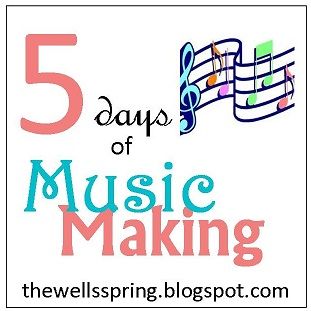
Kids love body percussion! They are mobile little creatures early on and ever so curious. An early milestone is clapping, but why stop there? Encourage children to clap, pat, tap different spots on their body. How does the sound change? Oh, and don't forget to stomp - that's always a favorite!
When teaching music in the public schools, one of my favorite lessons was to introduce the students to "hambone." Historically, slave owners confiscated and forbid African slaves to fashion new drums out of fear that they would use the drums to communicate and rally one another to rebel. However, the slaves were resourceful and found other ways to create rhythm. While they did use bones and found objects, the most readily available percussive instrument was their bodies. They would clap their hands, slap their chests and thighs, etc.
Now, how did this come to be known as hambone? It is a name illustrating the ingenuity of the slaves. When cooking a pot of soup with the meat scraps and few vegetables available, a ham bone would be added to the water to flavor the soup. This same bone would be shared among many families to flavor multiple pots of soup. Just as the slaves were resourceful in stretching the little food they were provided, they were equally creative in the improvised movements of their body percussion.
In my classroom, I would always show folk singer, John McCutcheon, hamboning. He learned to hambone as a child from an African-American carnival performer. He likens hambone to using your entire body as a "drum set"—feet, hands, arms, face, and legs. I like this particular video clip because he teaches students to do a few simple percussive movements. Then, he goes on to perform a much more intricately and fast-paced hambone. Unfortunately, due to copyright issues, I can't post the video, but I strongly encourage you to gather your little ones and spend the 2 1/2 minutes viewing it HERE! (Yes, it is a dated video... check out some of those glasses and hairdos - hee, hee!) After watching, be sure and give it a try!
Suggested Body Percussion Activities
- Sing If You're Happy & You Know It (stomp, clap, etc.)
- Clap a rhythm and have your child repeat it
- Play Patty Cake with little ones... try Miss Mary Mack with olders
- See what unique sounds you can create patting various parts of your body
- Play your face... change the shape of your mouth and observe what happens to the sound
- Video your own hambone performances

No comments:
Post a Comment